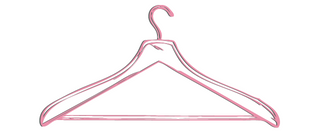The Truth About Finding a Second Home for Dance Costumes: 5 Things You Should Know
When it comes to dance costumes, the options for giving them a second life are often more complicated than we expect. Costumes can be pricey, uniquely styled, and designed to fit a specific dancer or routine. So what happens once they’re no longer in use? If you’re wondering how to responsibly and sustainably part with dance costumes, here’s the truth behind finding these outfits a second home—and the challenges that come with it.

Dance parents, you have more power than you think! These are made and purchased for YOU by your dance studio. YOU have the power to decide what you say no to.
If you haven’t already, you might want to check out our post on The 7 R’s of Sustainable Fashion to learn all the possible ways to extend the life of a dance costume. In this post, we will only cover the most popular choices for letting go of old dance costumes, which include finding options for Resale, Repair, Repurpose, Recycle, and Reuse. For each option, we are going to shine a light on the challenges you might not expect to come with it and provide some tips along with it.
Resale: The Wait for a Buyer
One of the first options people consider is resale. Platforms like Poshmark, eBay, and specialized dance resale sites (such as DanceCostumes.com) cater to dancewear, which might seem ideal for finding a new owner. But there are some unexpected challenges:
- Demand and Specificity: Dance costumes are highly niche items. Unlike generic clothes, they’re often tailored to a specific style, routine, or season. This means that finding the right buyer can take time, sometimes months or even years, which isn’t ideal if you’re looking to declutter.
- Low Resale Value: Dance costumes are a significant investment, yet they tend to have poor resale value. While you may have spent a lot initially, used costumes typically fetch much less, even if in excellent condition. You might see only a fraction of your original expense back.
Tip: If you’re set on resale, try connecting with local dance studios or parents’ groups on social media. Community groups, especially those with younger dancers, may have parents looking to save on costume expenses by buying secondhand.
Repair: Extends Costume Life, But Doesn’t Bring A Dancer
Repairing dance costumes can be a sustainable, cost-effective solution, allowing you to extend their life with minimal effort. However, repairs require some basic tools and know-how, so let’s break down the considerations:
- DIY Repairs: Minor tears, loose sequins, or broken straps can often be fixed at home with sewing supplies or fabric glue. It’s worth investing in a basic sewing kit or finding simple tutorials online if you’re unfamiliar with these techniques.
- Professional Help: For more complex repairs—like adjusting the fit or replacing lining—consider taking the costume to a local tailor or seamstress. Dance costumes often include delicate fabrics, which are best handled by a professional.
- Common Repair Needs: Some common issues include broken zippers, worn hems, or fabric tears. For sequined or embellished costumes, loose details are also typical. Repairing these small issues can make the costume look as good as new.
Repair Resource Suggestions:
- Local Tailors and Dry Cleaners: Many tailor shops have experience working with costumes and can provide affordable, effective fixes.
- Online Tutorials: Resources like YouTube offer step-by-step guides for beginners, covering everything from hand-sewing repairs to patching fabric tears.
Ultimately, repairing costumes rather than disposing of them can save money and reduce waste, keeping these beautiful items in rotation longer. A small effort can go a long way in extending the life and joy of each piece.
Repurpose: Some Level of Creativity Is Required, Sewing Machine Is a Must
If you’re the crafty type, repurposing is a fantastic way to give new life to a costume. But be prepared for a project:
- DIY Skills: Repurposing a costume requires at least basic sewing skills and, in some cases, access to tools like a sewing machine, scissors, and fabric glue. If you lack these skills, a project can quickly turn into frustration.
- Examples of Repurposing Ideas: Costumes can be transformed into accessories, dance bags, or even incorporated into new dance costumes for younger siblings or friends. Some creative parents even turn them into keepsake items, like pillows or framed memory pieces.
Repurposing does require time and skill, so it’s often worth teaming up with someone who has DIY experience. Dance mom groups are great places to connect and trade ideas or services–a geat place to look for them is on Facebook and search for groups in your local community.
Recycle: The New Frontier of Textile Recycling
Recycling is one of the most sustainable options in the 7 R’s of clothing, but it can be challenging with dance costumes:
- Limited Textile Recycling Programs: Textile recycling isn’t widely available, especially for specific materials often used in dance costumes, like spandex, sequins, and synthetic blends. In Ontario, for example, textile recycling programs are limited, with some options available only in select cities.
- Challenges with Costume Materials: Costumes are often made from mixed materials that are difficult to process. Programs like TerraCycle offer mail-in textile recycling options, though costs can add up.
For those with access, check out if your area has a textile recycling program (like York Region’s Textile Recycling or Toronto’s ReUseIt program). Alternatively, specialized online services may accept mail-ins, though you may incur shipping fees.
Reuse: Donating it to Another Dancer
Many people think of donation as a straightforward solution, but it too has complexities:
- Matching with the Right Program: Not all donation centers accept dance costumes. You’ll want to look for organizations that specifically cater to dancewear, like Second Stage Dance, which provides costumes to dancers who may not be able to afford new ones. Programs like this ensure that donated items are used in a way that aligns with their original purpose.
- Logistics and Preparation: Donating can require a bit of preparation—cleaning, sorting, and sometimes even shipping to an organization that can accept the costumes. You’ll also need to check if there are specific guidelines or seasonal restrictions, as some organizations only accept items at certain times of the year.
Example Organizations for Dancewear Donation:
- Second Stage Dance (Canada): Focuses on providing secondhand dancewear and costumes to dancers in need, ensuring that items reach dancers who can put them to immediate use.
- DanceFairy.com (US): This online program provides dancewear donations to studios and dancers in underfunded communities across the United States.
If you choose this route, check each organization’s requirements to ensure that your donation meets their standards and that the costumes can be used as intended.
The best choice we can make is to reduce! For sustainable solutions we first have to rethink or refuse
Rethink: Before buying a new costume, consider how much use it will get. Studios are increasingly opting for simpler, versatile costumes that can be adapted for multiple performances.
Refuse: Sometimes, the most sustainable option is not buying at all. Instead of a new costume for each performance, consider rental options or use mix-and-match pieces that work for different routines.
Wrapping It Up: Finding The Solution that Works Best for You
Each of these options offers a path to sustainably handle old dance costumes, but they come with their own challenges. Whether you’re hoping to make some of your investment back, help another dancer, or simply clear out your closet, each approach requires a little research and planning.
Sustainable dancewear is still evolving as a concept, but through creativity, community, and resourcefulness, we can find ways to extend the life of dance costumes. By finding solutions that work within our circumstances, we not only lessen our environmental impact but also contribute to a culture of sustainability in the dance world.


